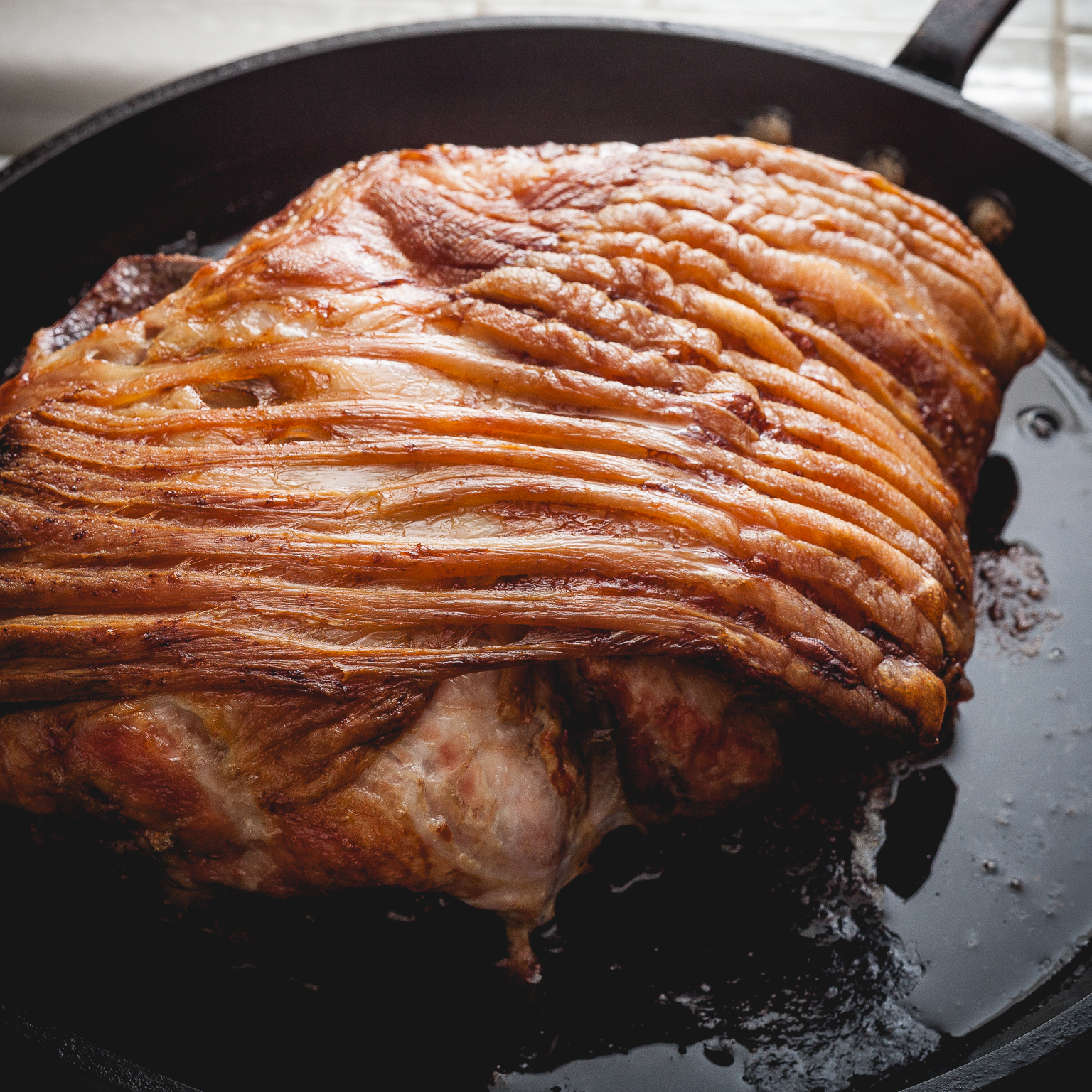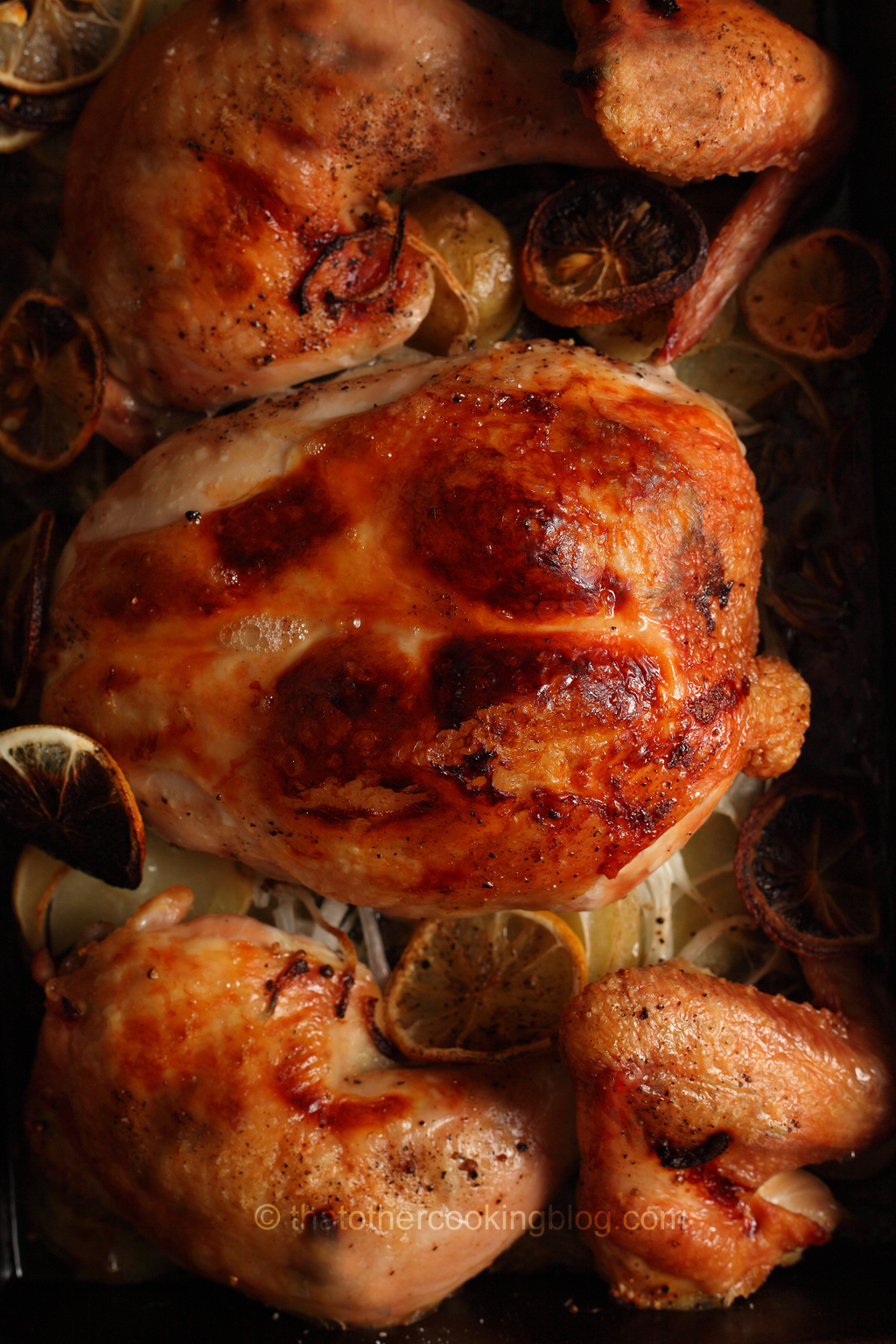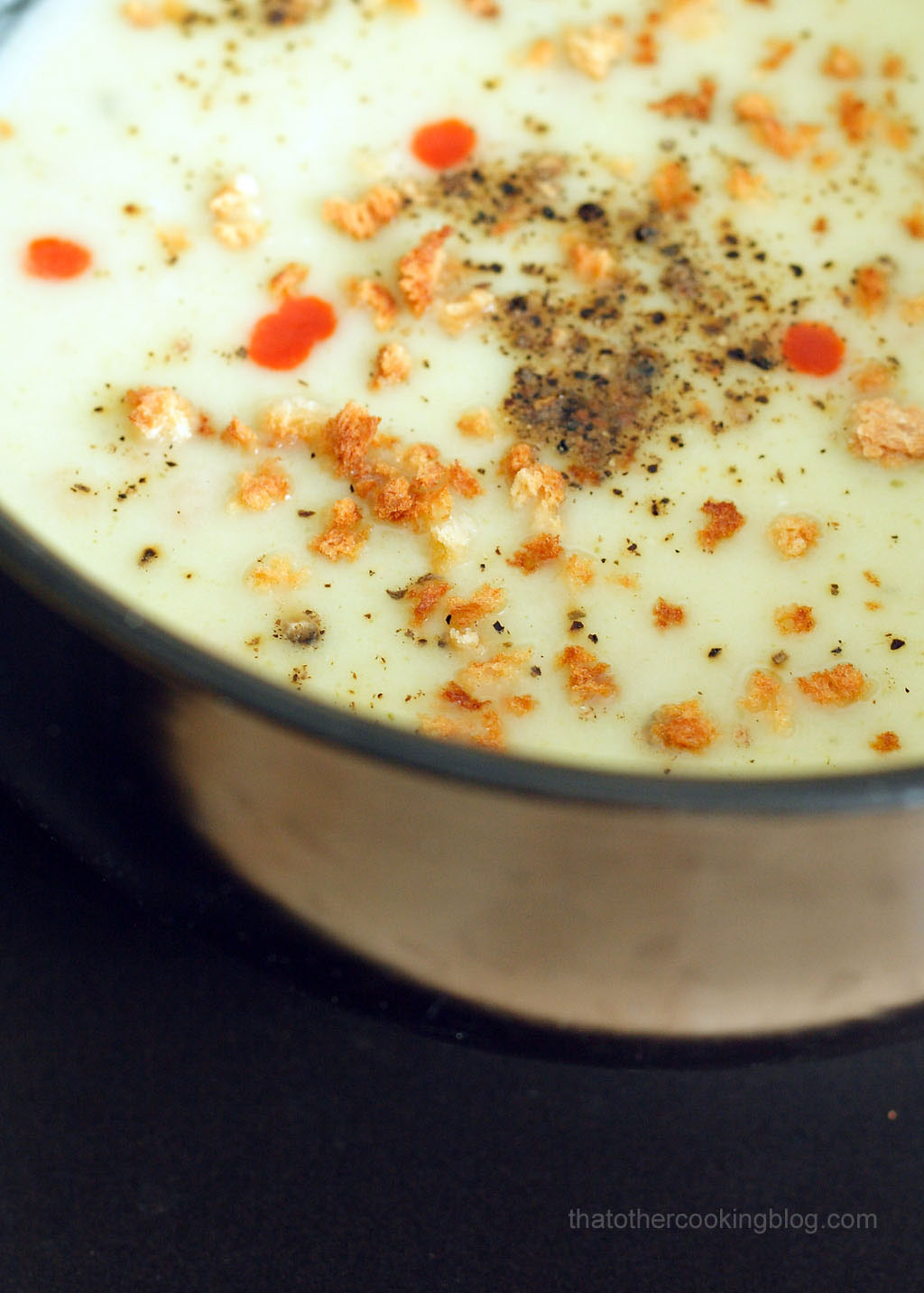I chose the wrong time of the year to roast a 15-pound pork shoulder for sure. The heat wave that’s hitting southern California right now probably contributed to the amazing quality of the crackling I got. I mean, it is HOT and DRY in here! But that didn’t stop me. I wanted to make pork tamales really bad and starting with a perfectly roasted pork shoulder is what I consider key… ok, I don’t know if that’s how most traditional recipes approach it but that’s how I make pork tamales. I’ve found many recipes suggesting boiling the pork meat, which is fine, but roasting develops more flavor complexity (only on the surface guys… come one… you knew that). Sure, it will take longer, but it is (as if smoldered by Ryan Raynolds) …” so worth it…”.

This pork piece could be served as is, carved at the dinner table and you would definitely impress your dinner crowd. It looks amazing, extremely elegant! and it smells amazing as well. Whether you’re thinking of serving the roast straight or using the meat for far more ambitious applications let me break down the process of making this roast in 3 very easy steps.
1. Scoring of the skin.
Sometimes we’re lucky enough to find a pork shoulder, bone-in and skin-on. I love it when that happens. Pork skin, like any other kind of animal skin is made of connective tissue and not fat like sometimes is suggested. The fat is underneath the skin. The skin itself is mainly collagen. To crisp up collagen, a ton of heat is required. As the fat renders away, the collagen breaks down, the water in it evaporates and overtime, the pork skin becomes crackling. Scoring the skin helps make this process more efficient by increasing the surface area. More skin/fat is exposed to heat this way facilitating its cooking. The same reason why you’d score the skin on duck breasts for example.

2. Seasoning. Brining.
I prefer relatively long curing/brining periods when time permits it. Usually 24 hours, sometimes longer, 32 hours and I’ve gone as long as 48 hours sometimes. The recommended ratios for water/salt/sugar and other ingredients vary from article to article. Same thing with the amount of time. Mainly because there’s a lot of guessing going on out there but also because brining is actually very tricky. There’s a lot of science behind brining and all of it is actually really cool. I’m working on post to go over brining more in depth but if you don’t wanna wait, here is a really cool article on the science of brining by chef Jacob Burton. For this pork piece I used 1 cup of salt, 1 cup of sugar and a gallon of water (which is a pretty standard brine formula). That’s a salt concentration of 7% more or less. Which is pretty salty. I’d recommend brining for 24 hours for a 15 pound pork shoulder.

3. Cooking/Roasting.
I roasted the shoulder for about 4 hours, starting at 350F for a couple of hours and then raising that to 375F for another 2. Some people would prefer cooking the shoulder at a much lower temperature for a longer period of time, and I wouldn’t argue that that would work well and yield a juicier roast. I could argue that the quality of the crackling could be as good. I also had plans for my pork shoulder and those plans didn’t include carving it at the dinner table. Pork tamales is my next post so stay tuned. I think concentrating the flavor of pork by overcooking it a bit is probably acceptable.. the tamales turned out amazing so I’ll stand by my approach. Believe me, it paid off. And… I’m out. Comments? Yes, please. Leave them below. 
Wanna get more sous-vide cooking guides and cool cooking how-to’s in your mailbox? You know what needs to be done!
We never spam. You should only be getting updates when new content is posted on the site. We also respect your privacy. We don’t share your email address with anyone and you can unsubscribe anytime!





6 comments
You write: “I roasted the shoulder for about 4 hours, starting at 350F for a couple of hours and then raising that to 357F for another 2”. Is there a typing error in the temperatures? Raising the temperature from 350 to 357 shouldn’t make much difference.
ah, that’s a typo! let me correct that right now. Thanks for pointing it out. I meant 375F 🙂
We love pork shoulder and this is a good way to cook it (although I’d definitely use a thermometer with a probe to avoid overcooking). I had to chuckle at this dish looking “elegant” for a dinner party. How can such a big hunk of meat be made to look elegant?
As for brining, using such a high salt% in your brine means that the timing is very important. The longer, the saltier. I prefer to use an equilibrium brine. It will take longer, but the salt level will be exactly like I want it to be.
I guess that how much I love pig. I find it beautiful in any presentation hahahah 😉 I haven’t tried equilibrium brining yet but definitely on my very long list of things to learn. How do you know when it has reached equilibrium? Do you have a salinity meter?